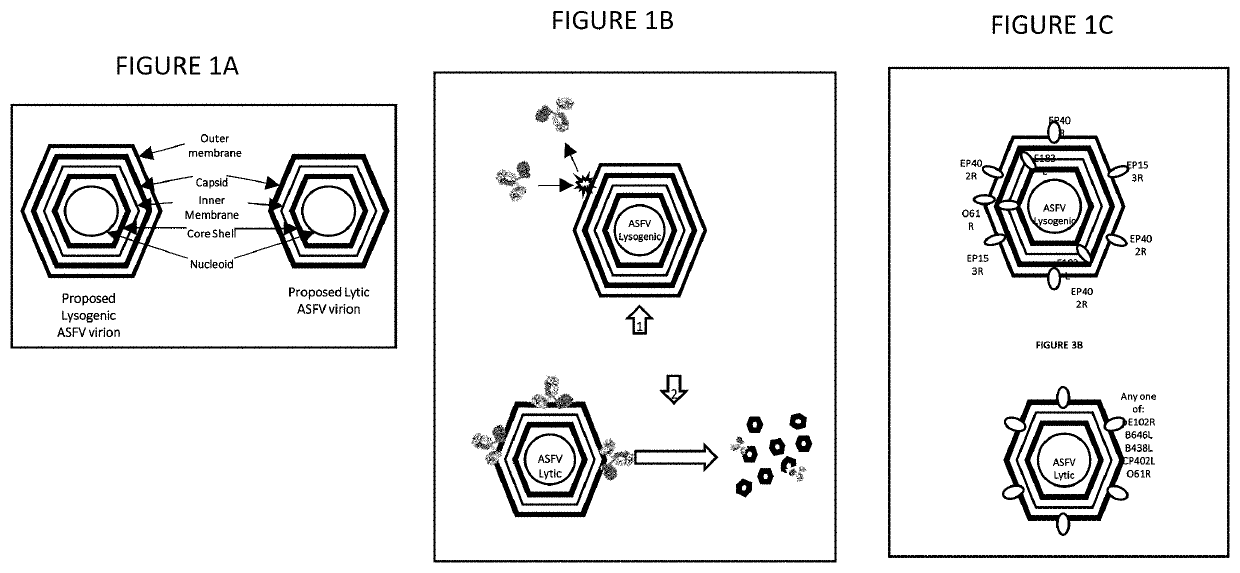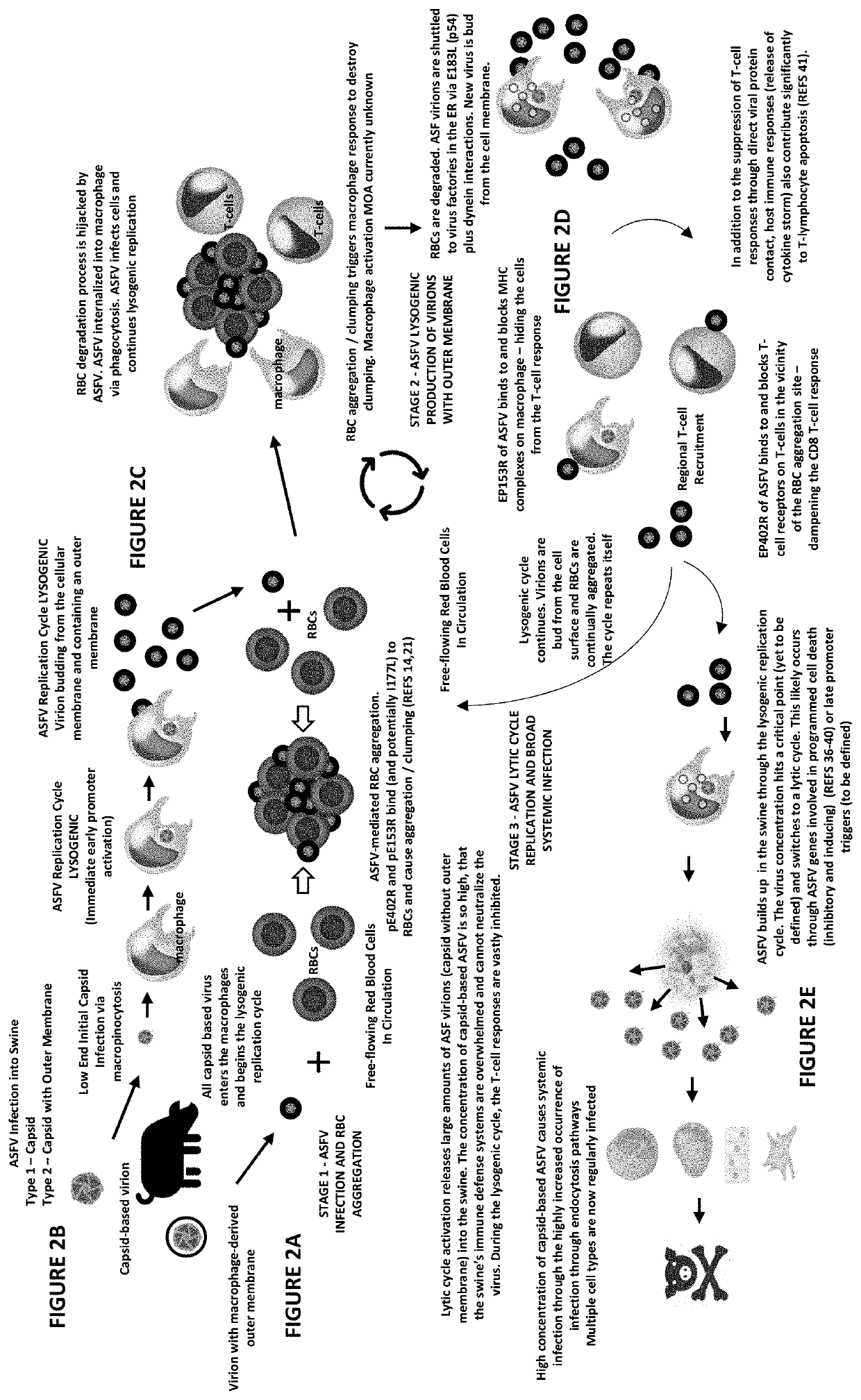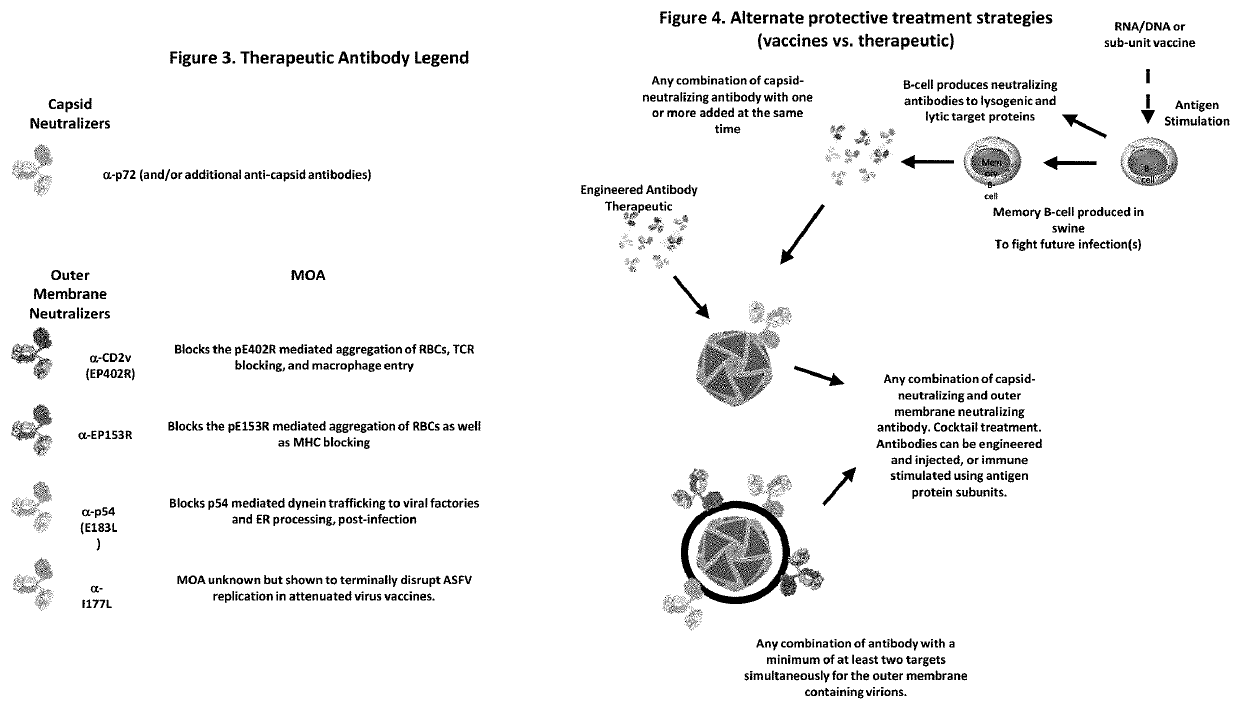Methods of blocking asfv infection through interruption of cellular and viral receptor interactions
a technology of asfv infection and receptor interaction, which is applied in the field of methods and/or treatments for preventing viral infections in animals, can solve the problems of inability to obtain vaccines or treatment, less desirable technologies than more advanced, and few attempts to use dna/rna vaccine approaches for asfv infection
- Summary
- Abstract
- Description
- Claims
- Application Information
AI Technical Summary
Benefits of technology
Problems solved by technology
Method used
Image
Examples
Embodiment Construction
[0072]The present invention provides for a method of preventing and treating viral infections (and preferably ASFV in porcine), by inhibiting the viral entry protein-to-cellular receptor interaction. Treatment can be accomplished through either 1) the (non-) or competitive inhibition of the viral ligand-cellular receptor interactions through engineered antibody therapeutics, 2) virus neutralization by engineered antibody therapeutics, 3) virus neutralization by engineered antibody therapeutic that also prevent phagocytosis and macropinocytosis (CD47 / mCD47 domain included in the Fc region of the antibody), 4) virus neutralization by engineered antibody therapeutics with bispecific heavy and light chain epitopes, 5) virus neutralization by engineered antibody therapeutics with bispecific heavy and light chain epitopes that also prevent phagocytosis and macropinocytosis (CD47 / mCD47 domain included in the Fc region of the antibody), 6) the (non-) or competitive inhibition of the viral l...
PUM
| Property | Measurement | Unit |
|---|---|---|
| diameter | aaaaa | aaaaa |
| length of time | aaaaa | aaaaa |
| viral structure | aaaaa | aaaaa |
Abstract
Description
Claims
Application Information
 Login to View More
Login to View More - R&D
- Intellectual Property
- Life Sciences
- Materials
- Tech Scout
- Unparalleled Data Quality
- Higher Quality Content
- 60% Fewer Hallucinations
Browse by: Latest US Patents, China's latest patents, Technical Efficacy Thesaurus, Application Domain, Technology Topic, Popular Technical Reports.
© 2025 PatSnap. All rights reserved.Legal|Privacy policy|Modern Slavery Act Transparency Statement|Sitemap|About US| Contact US: help@patsnap.com



